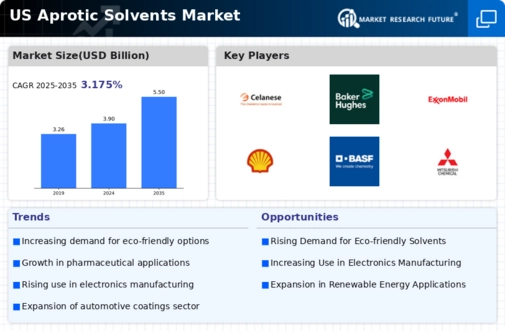The US Aprotic Solvents Market is characterized by a diverse range of players, each vying for competitive advantage through innovation, strategic partnerships, and a deep understanding of customer needs. This market is essential for a variety of applications, including coatings, adhesives, and chemical synthesis, making it highly appealing for manufacturers and distributors alike.
Competitive dynamics are influenced by factors such as price fluctuations, regulatory considerations, and evolving technological advancements. Companies are not only focusing on increasing their production capacities but are also investing in research and development to enhance product quality and sustainability.
Market entrants are motivated by the growing demand for aprotic solvents, driving competition to meet the varying needs of end users in industries such as automotive, pharmaceuticals, and consumer goods. Celanese holds a significant position in the US Aprotic Solvents Market with its expertise in chemicals and advanced materials.
The company is recognized for its strong market presence, driven by its extensive product portfolio that includes a wide array of aprotic solvents tailored for various applications. Celanese leverages its technical capabilities and innovation-led approach to deliver high-performance solutions that meet the stringent demands of its customers.
The company’s focus on sustainable practices and commitment to reducing environmental impact further solidify its strength in the market. Its ability to adapt to changing industry trends and regulations allows Celanese to capture market opportunities effectively while maintaining a competitive edge.
Baker Hughes, though primarily known for its energy and technology services, also plays a notable role in the US Aprotic Solvents Market, offering key products and services that cater to specific niche applications.
Its expertise in chemical processes enables the company to deliver innovative solutions, particularly in the realms of solvents used for energy production and industrial applications. Baker Hughes emphasizes its strengths in leveraging technology, fostering partnerships, and engaging in strategic mergers and acquisitions to enhance its market position.
These strategies not only expand its capabilities in the aprotic solvents arena but also improve its service offerings and operational efficiencies. The company's focus on research and development drives continuous improvement in its product lines, ensuring that it remains competitive while meeting evolving market demands in the United States.

























Leave a Comment